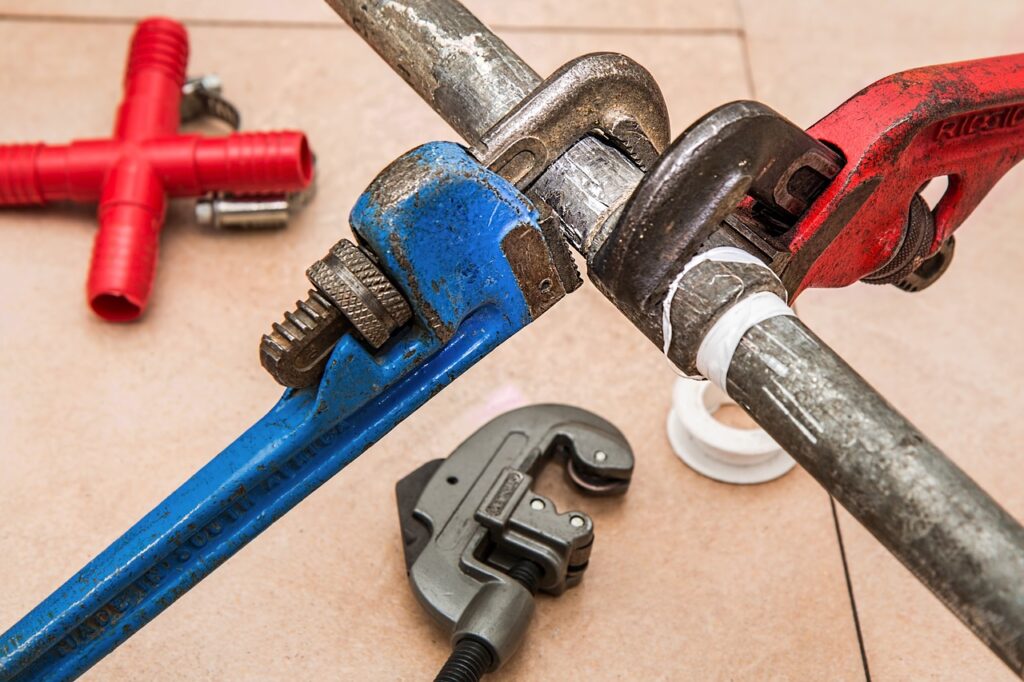How Property Managers Can Use Maintenance Teams to Increase ROI: 12 Practical Strategies
After managing over 2,400 properties and handling 18,000 maintenance requests across 12 years, I’ve seen too many property managers treat maintenance as just another expense. But maintenance is actually one of the biggest factors you can control to improve your property’s profits.
Properties with well-managed maintenance teams make 15-23% more profit than those that just react to problems. They also keep tenants 89% longer.
Here’s how to set up maintenance that doesn’t just fix problems, it helps make money.
1. Train Your Team to Handle High-Value Work
Most managers only think about cutting costs. Smart managers find ways to make money too.
What to do: Train your maintenance team to handle upgrades that regular handymen can’t do:
- Smart home integration (average $150-300 per unit revenue boost)
- Energy efficiency retrofits (qualify for utility rebates worth $500-2,000 per unit)
- ADA compliance modifications (access untapped tenant segments)
- Commercial-grade security installations
For comprehensive guidance on managing property maintenance and work orders, consider implementing a systematic approach that tracks all maintenance activities.
Example: One of my 240-unit properties makes an extra $48,000 per year by offering tech installation services to tenants. Our maintenance team does the work at 60% less cost than outside contractors, and we charge market rates.
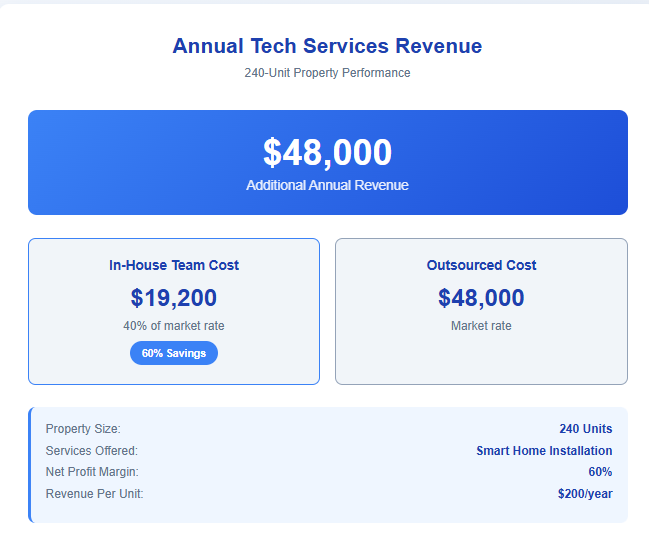
2. Use Technology to Predict Problems Before They Happen
Basic preventive maintenance is good. Predicting problems before they happen is better.
How it works: Install wireless sensors on important systems like HVAC, water heaters, and electrical panels. These sensors send data to your maintenance system and catch 78% of problems before they become emergencies.
Key Metrics to Track:
- Vibration patterns in HVAC systems (predicts bearing failures 3-4 weeks early)
- Water pressure fluctuations (catches pipe issues before bursts)
- Electrical load variations (prevents fire hazards and equipment damage)
Cost vs. savings: Sensors cost $200-400 per unit but pay for themselves in 8 months by preventing expensive emergency repairs.
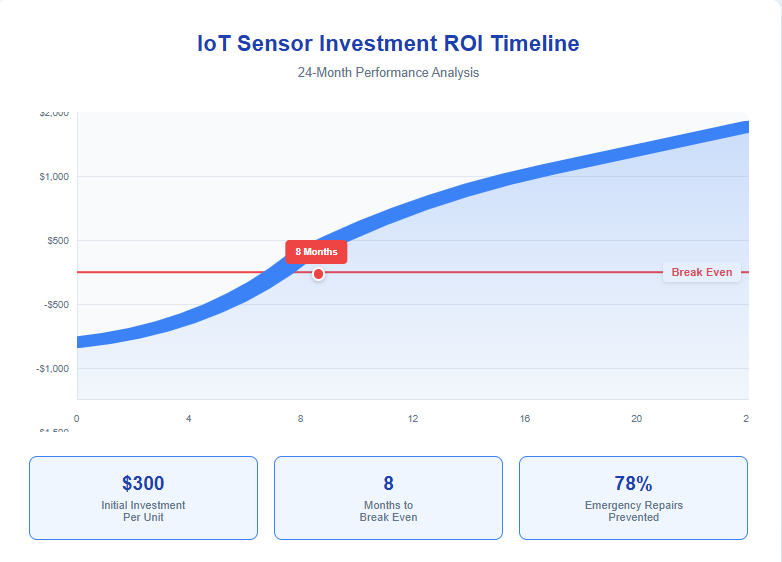
3. Use Maintenance to Keep Tenants Happy and Reduce Turnover
Every tenant who stays saves you $1,500-3,000 in turnover costs. Your maintenance team can help keep them.
What to do:
- 24-Hour Response Guarantee: Not just for emergencies, for all requests
- Personal Maintenance Concierge: Assign specific technicians to specific tenants
- Proactive Outreach: Monthly “wellness checks” that catch issues before complaints
- Value-Add Services: Seasonal deep cleaning, minor improvements, and tech upgrades
For property managers looking to improve tenant retention strategies, exceptional maintenance service is one of the most effective approaches.
Results: Tenants who rate maintenance service 9+ out of 10 renew their leases 94% of the time. Those who rate it 7 or below only renew 67% of the time.
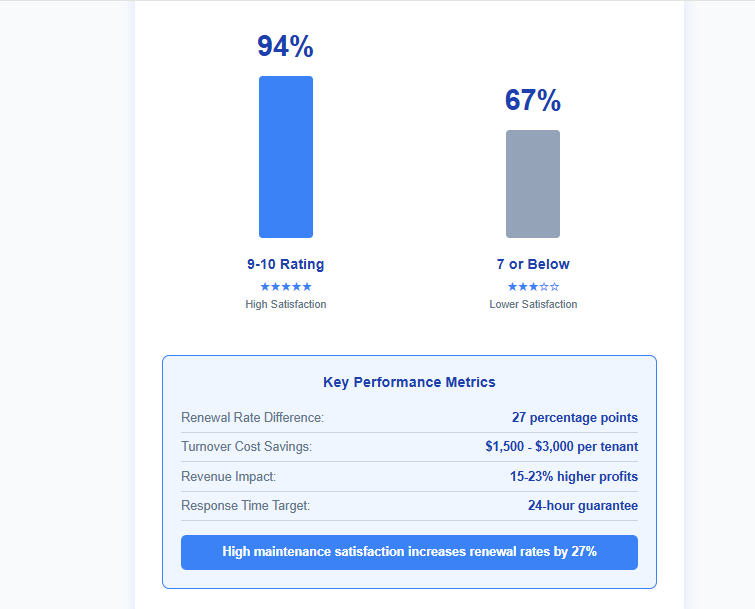
4. Know When to Do Work In-House vs. Hiring Contractors
The choice isn’t all or nothing, it’s about being smart with each type of work.
Simple rule: Use the 40-60-80 approach:
- 40% of tasks: Keep in-house (routine maintenance, minor repairs, basic upgrades)
- 60% of complex work: Hybrid approach (your team manages, specialists execute)
- 80% markup threshold: If outsourced work costs 80% more than in-house capability, bring it internal
Smart move: Partner with contractors who will train your team on their techniques in exchange for guaranteed work. This gives you more skills without hiring more people.
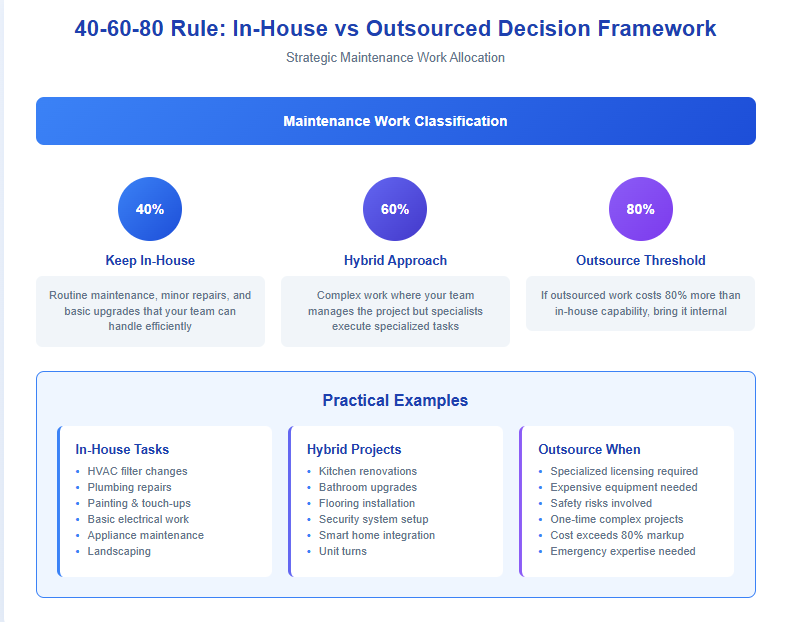
5. Turn Units Around Fast to Get Higher Rents
The difference between a 7-day and 21-day vacancy isn’t just lost rent, faster turns let you charge more because you hit the market when demand is high.
How to do it:
- Pre-Move Inspection: Complete scope of work before tenant leaves
- Parallel Processing: Multiple trades working simultaneously, not sequentially
- Modular Improvements: Standardized upgrade packages that tenants choose from
- Market Timing: Schedule turns to align with peak leasing seasons
Why it matters: Properties that finish turns in under 10 days can charge 8-12% higher rents because they’re available when more people are looking.
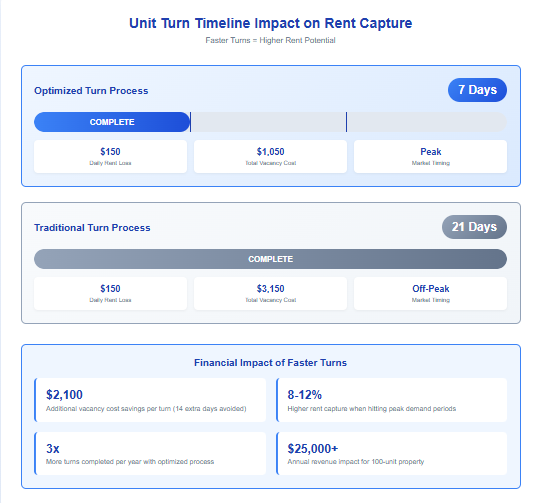
6. Use Your Maintenance Records to Make Better Investment Decisions
Your maintenance data tells you which properties need money and which ones are ready for improvements.
What to track: Look at maintenance costs by property age, unit type, and system type. This shows you:
- Which properties need major capital investment vs. those ready for value-add improvements
- Optimal timing for system replacements (before failure patterns emerge)
- ROI projections for various improvement scenarios
Practical tip: Calculate “Maintenance Cost Per Unit” for all your properties. If a property costs 25% more to maintain than similar ones, it might need major improvements or you should consider selling it.
7. Build Good Relationships with Contractors
Your contractor network gives you an advantage when managed well.
How to do it:
- Tiered Vendor Structure: A-list vendors for complex work, B-list for routine tasks
- Performance Scorecards: Rate vendors on cost, speed, quality, and tenant satisfaction
- Exclusive Partnerships: Lock in preferred pricing and priority service
- Vendor Training Programs: Educate contractors on your standards and tenant expectations
Money-saving tip: Negotiate “portfolio pricing” where contractors give you 15-25% discounts in exchange for guaranteed work across all your properties.
8. Adjust Your Maintenance Budget Based on What’s Actually Happening
Fixed budgets don’t work well. Flexible budgets get better results.
What to do: Change your maintenance budget monthly based on:
- Seasonal demand patterns
- Property age and condition trends
- Local market rental rates
- Tenant retention metrics
Smart approach: Set up rules where properties that keep tenants well or charge higher rents automatically get bigger maintenance budgets.
9. Handle Emergencies Better Than Your Competition
Real emergencies can either cost you a lot of money or help you build stronger relationships with tenants.
What you need:
- 24/7 Response Team: Either in-house or contracted with guaranteed response times
- Emergency Triage Protocol: Distinguish true emergencies from urgent requests
- Tenant Communication: Real-time updates on emergency resolution progress
- Post-Emergency Follow-up: Ensure complete satisfaction and prevent recurrence
Implementing a robust maintenance request management system helps you handle emergencies efficiently while maintaining detailed records for future reference.
Results: Properties with good emergency response keep tenants 23% happier and have 31% less damage from emergencies.
10. Make Extra Money Through Your Maintenance Team
Your maintenance team can earn money beyond just fixing things.
Ways to make money:
- Tenant Improvement Services: Handle tenant-requested upgrades at market rates
- Seasonal Services: Holiday decorating, deep cleaning, storage solutions
- Technology Integration: Smart home installations, security upgrades, automation setup
- Maintenance Contracts: Offer extended warranties on appliances and systems
For properties with online rent payment systems, you can easily charge tenants for these additional services through the same platform.
Example: A 180-unit property I managed generated an additional $34,000 annually through tenant-paid improvement services delivered by the maintenance team.
11. Schedule Maintenance Work Efficiently Across All Properties
If you manage multiple properties, you can save time and money by coordinating work better.
How to organize:
- Geographic Clustering: Route maintenance efficiently across properties
- Skill-Based Scheduling: Match technician expertise to job requirements
- Seasonal Workload Planning: Balance preventive maintenance across the year
- Cross-Training Programs: Develop multi-skilled technicians who can handle diverse tasks
Good idea: Have experienced maintenance people rotate between properties. They can share what works and spot improvement opportunities.
12. Track Your Results and Keep Improving
You can’t improve what you don’t measure.
Important numbers to watch:
- Maintenance Cost Per Door: Monthly and annual tracking
- Emergency vs. Preventive Ratio: Target 70% preventive, 30% reactive
- Tenant Satisfaction Scores: Specific to maintenance interactions
- Asset Appreciation: Properties with superior maintenance appreciate 12-18% faster
Most important calculation: Maintenance ROI = (Money Saved + Extra Revenue + Property Value Increase) ÷ Total Maintenance Costs
Good properties get 3:1 ratios or higher.
Why This Matters
The property management business is changing. The managers who succeed are the ones who see maintenance as a way to make money, not just spend it. Properties with good maintenance operations do better on everything: profit, keeping tenants, property values, and investor returns.
What to do next:
- Look at your current maintenance approach compared to these 12 strategies
- Pick the 3 that would help you most
- Make a plan with clear timelines and expected returns
- Start small to test what works before doing everything
Good property managers fix problems. Great property managers turn every part of their operation into an advantage. Start with maintenance and watch your whole business improve.
To learn more about implementing these strategies with modern technology, explore how property management software like Propertese can streamline your maintenance operations and boost your ROI. Schedule a demo today.

